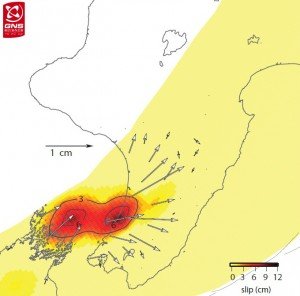Forty kilometres below Wellington two tectonic plates are grinding against each other in an almost imperceptible slow-motion earthquake.

The Kapiti “slow slip” quake has received a great deal of public attention after it was highlighted this week in a GeoNet blog post from Operations Scientist Caroline Little.
Her post, dauntingly titled M7 slow release earthquake under Wellington, explained the situation.
“To the west of Wellington, the equivalent of a magnitude 7 earthquake is happening right now, 40 km below ground. This would be Wellington’s largest earthquake in 150 years, yet nothing is felt at the surface. Even our sensitive earthquake recording instruments hardly notice a thing. This is because, unlike a normal earthquake, these plate movements happen very slowly in a process known as “slow-slip events”. This Kapiti slow-slip event is affecting an area spanning over 100 km from Levin to the Marlborough Sounds. Conventional earthquakes happen when one side of a fault moves past the other suddenly. A similar process occurs with slow slip, except it takes much longer for the fault to move and release energy, this is why slow-slip events are often called silent earthquakes.
“GeoNet’s continuously-running GPS instruments in Wellington and Kapiti show that the Pacific and Australian tectonic plates are slipping past each other more rapidly than usual. This has been going on since January of this year, and will most likely continue for several months. These movements represent the equivalent of a magnitude 7 earthquake on the plate boundary, at 40 km depth.” Keep reading…
The Kapiti slow slip event has since be covered by several national and regional news outlets, including:
Radio New Zealand: Slow-slip quake rumbles under Wellington
Hawke’s Bay News: Slow slip quake moves Hawkes Bay further away from Australia
TV3 News: ‘Silent’ quake gently rocks Wellington
Dominion Post (and other Fairfax sites): Slow-slip quake ‘hits’ Wellington
New Zealand Herald: Long-running Wellington quake a ‘slow-slip’ event